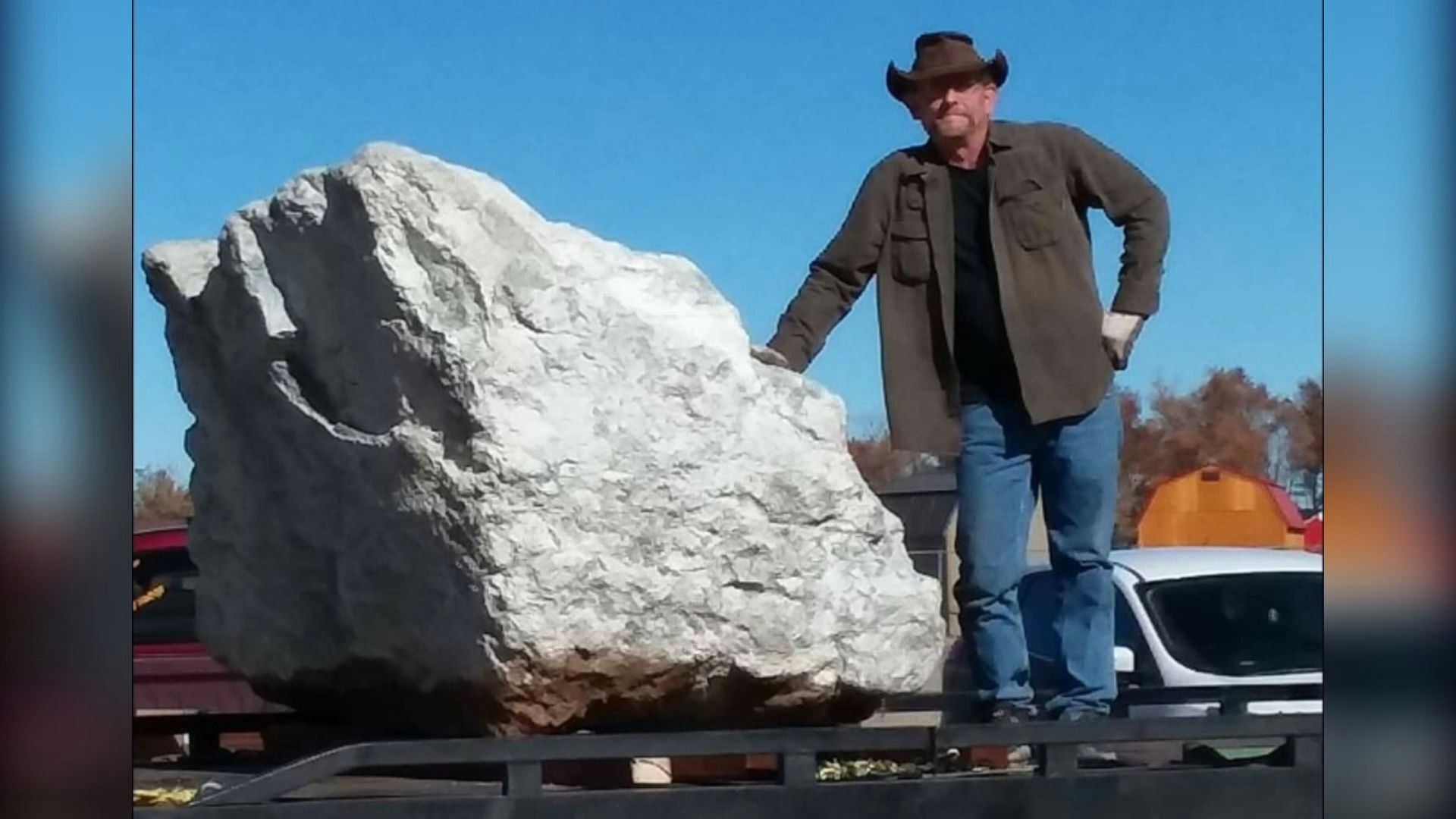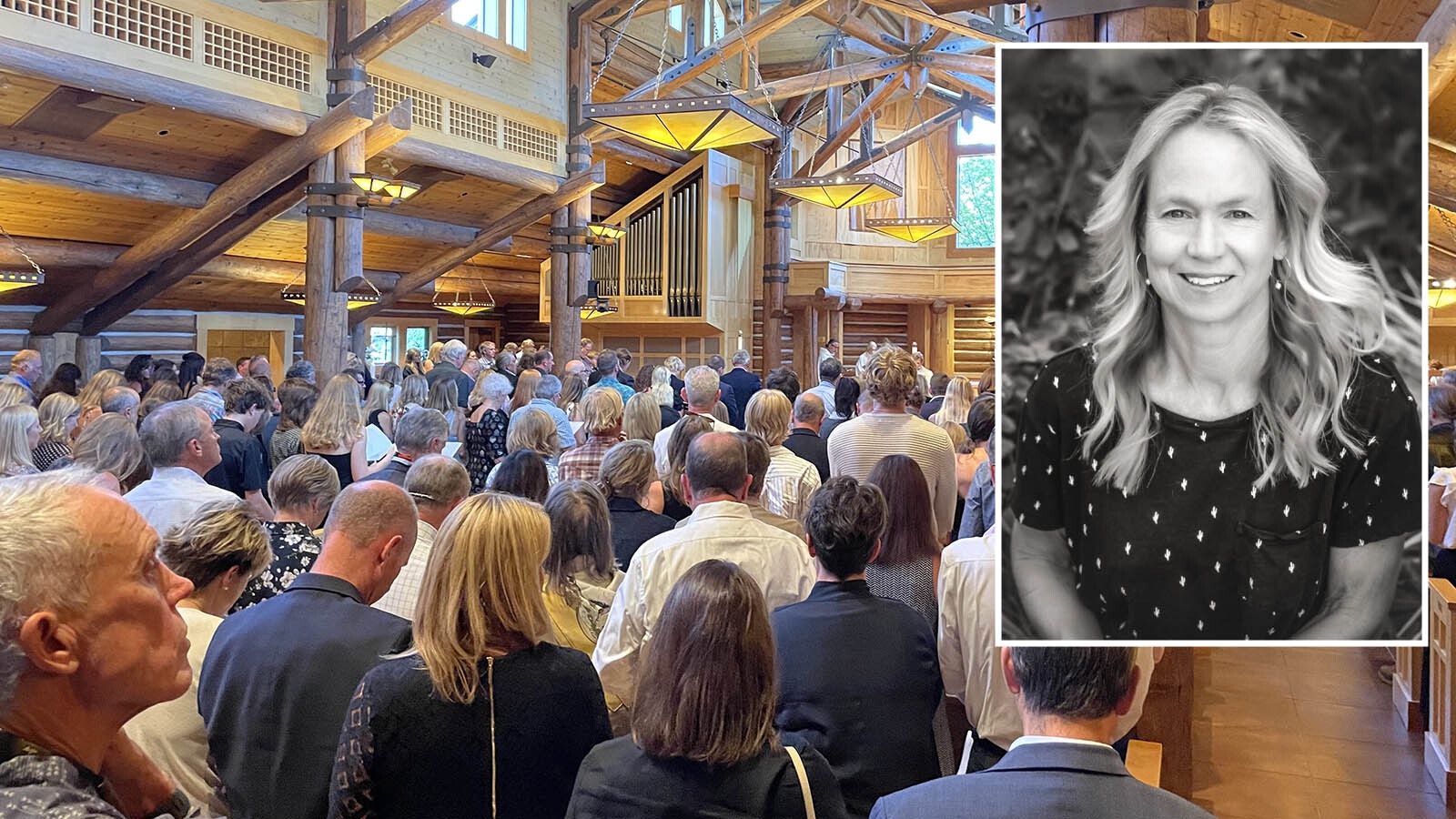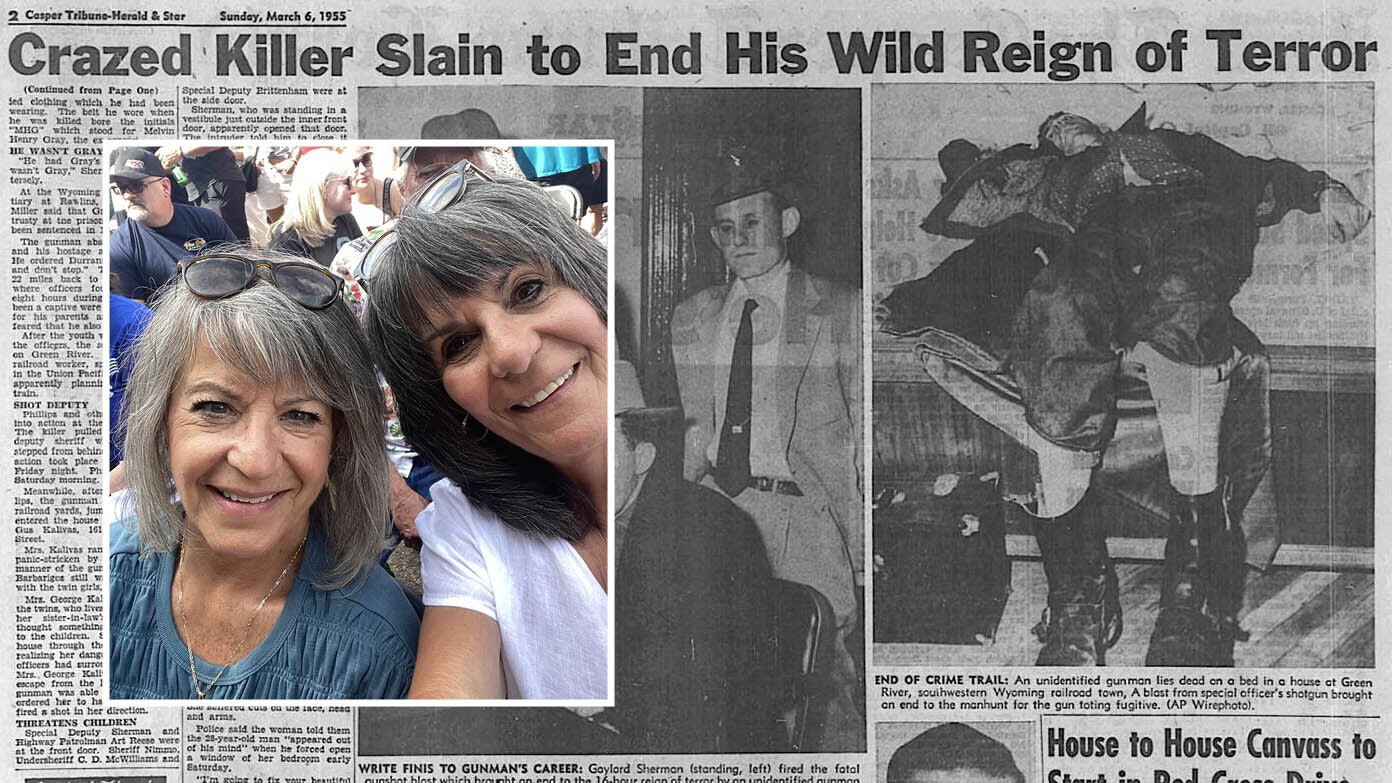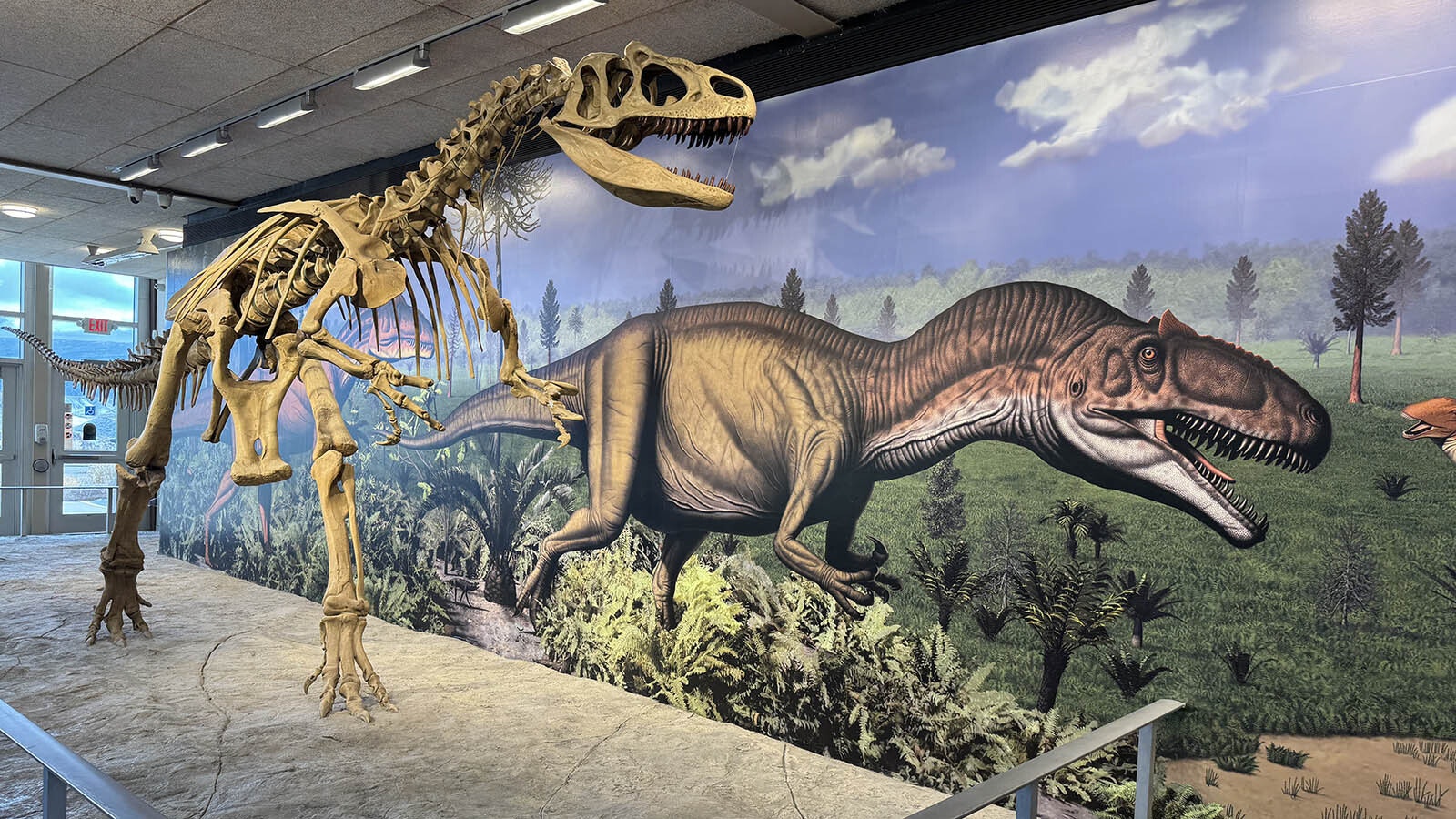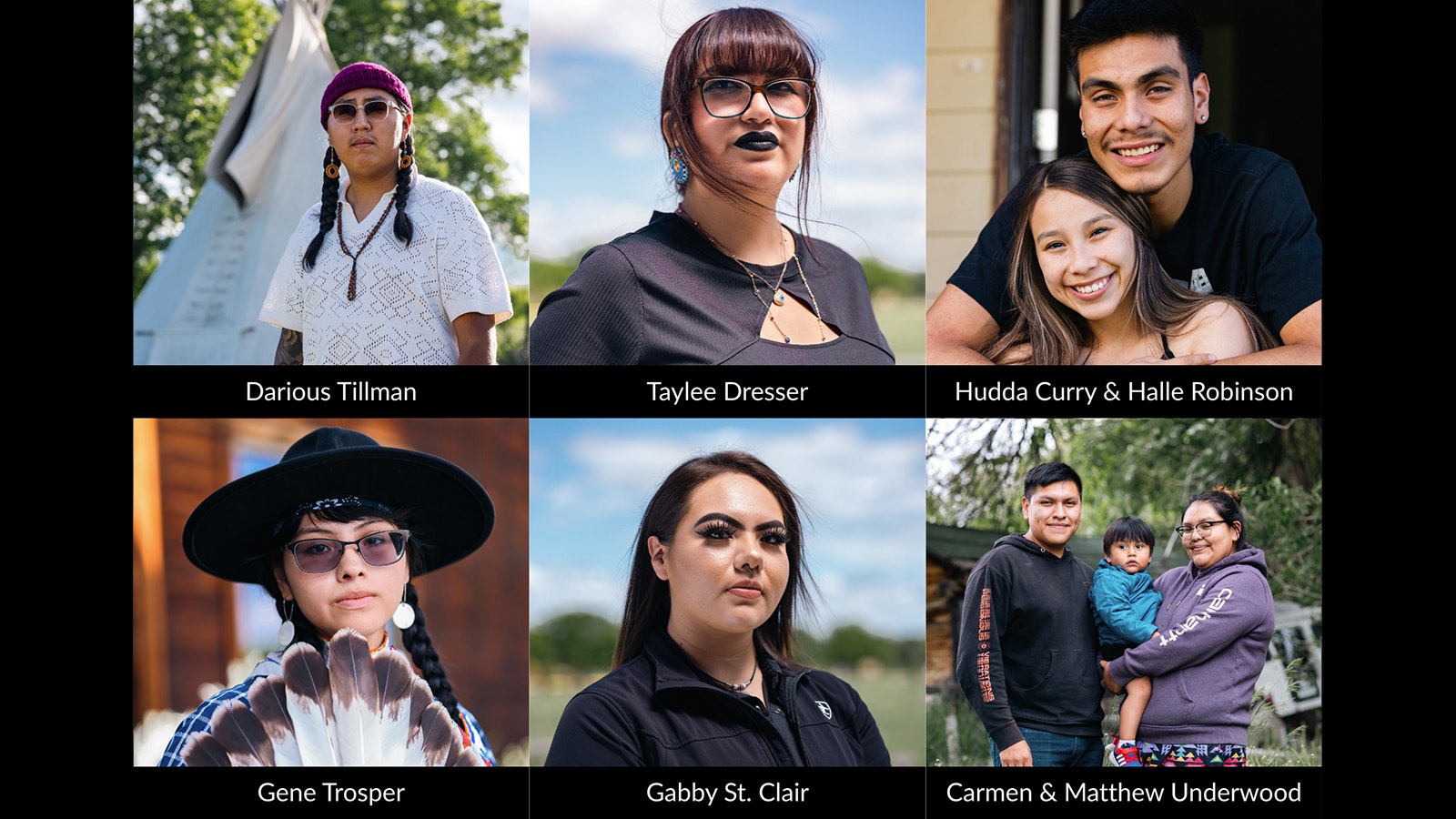Dave Frietag’s backyard near Lander is not landscaped in typical fashion.
Rather than trees and grass, Frietag has rows and rows of rocks. And not just any rocks, but boulders containing jade, a precious gemstone that is found throughout the Wyoming landscape, particularly in the central part of the state.
“Wyoming jade is unlike any other jade in the world,” Frietag told Cowboy State Daily. “In fact, every other jade in the world is compared to Wyoming jade, because we have so many different flavors here of such great quality.”
Wyoming’s state gemstone is nephrite jade, which is considered high quality and durable, and is relatively abundant in the Cowboy State. Colors can range from white to black, but various shades of green are most common.

Quality Of Wyoming Jade
Freitag explained that jade is graded in varying degrees of quality.
“There’s 95% junk jade, we’ll call it medium to low grade,” he said. “And there’s only that upper echelon, or 5%, that is the quality jade that they like to make jewelry out of and other things.”
But Freitag said that around 1% of the jade recovered from the Wyoming desert is the highest and rarest quality, worth thousands of dollars per pound.
“That’s the uncut, unhammered specimen that somebody found on the ground,” he said. “And through time – they didn’t cut it, they didn’t polish it, they just put it on the shelf and left it alone – some of these specimens now are going for $1,000 to $2,000 a pound simply because you can’t find them.”
Wyoming Jade Vs. The World
There are two types of jade that occur in nature — nephrite jade, which is found in Wyoming, and jadeite, which is only native to Myanmar.
Because of this, jadeite is considered more valuable (more valuable than gold, in some cases), but Wyoming apple-green nephrite jade is known around the world to be some of the finest in existence.
When it comes to determining the value of Wyoming jade, however, the market is vague. There isn’t a comparison gauge, no “jade index” like there is for gold, because of the variations in jade types.
Unique Jewelry
Freitag said Wyoming jade is considered an “amphibole” mineral, which means it’s a fibrous rock similar to asbestos that’s easily carved for jewelry and other artistic designs.
“Literally, you can carve jade down to a needle point, and the needle won’t fall off,” said Freitag.
Freitag pointed out that despite its carvability, jade is not soft. It is actually one of the hardest fibrous rocks in nature.
“Because of its interlocking fibers, it’s literally bulletproof,” he said.
Ken Rhoads, a jeweler in Lander who specializes in jade, said the stone registers as a 6.5 on the Mohs Hardness Scale, meaning it is about as resistant to scratches and abrasions as a steel nail (for reference, diamonds register a 10, while fluorite or apatite register 4 and 5, respectively).




Family Tradition
Jade hunting is a family tradition for Rhoads.
His grandparents, Bert and Verla, were the first settlers in the area to find and identify the semi-precious stones and spent hundreds of hours in the 1930s and ’40s scouring the prairie in search of the green gems.
“When I came to work with my father (in the 1970s), we marketed (jade jewelry) in the Rocky Mountain area,” Rhoads told Cowboy State Daily. “I was a traveling salesman for him, and I’d come home on the weekends, and we’d make the stuff up and send it back out again.”
Rhoads said while he was working with his father in the 1970s, jade was in such high demand they couldn’t keep up.
“It was all we could do to fill those orders,” he said. “And we pretty well quit hunting jade. My grandmother had some claims filed out there in Jeffrey City, and we quit jade just to take care of the business.”
195-Pound Jade Boulder
As popular as jade hunting was in decades past, Rhoads said interest in the jade trade is on the decline.
“Like, my generation is interested in the old cars of the old days and the newer generations aren’t,” he said. “I mean, it was there, and then it wasn’t so much.”
However, there are still treasures to be found. Freitag said one of his prized possessions is a 195-pound boulder that his wife found when the pair were out hiking north of Jeffrey City.
“It was in a sand dune, and the sand had blown off the top just a little bit, uncovering maybe only a half inch where you see a little window, maybe 6 inches long,” Freitag recalled.
The two dug out the boulder, which measured roughly 18 inches by 18 inches by 1 foot, but they weren’t able to lift it out themselves then.
“We had to come back another day with some friends, and it took three of us to pick it up and put it in the back of the pickup truck,” he said.
That boulder has a home now in Freitag’s backyard, along with nearly 30 pallets filled with other jade specimens.
“We’ve got jade, we’ve got agates,” he said. “We buy Wyoming rock collections, so all these old-time collections, even if it’s petrified wood, we buy that, and then we sort it into its appropriate piles, and people can fill up a 5-gallon bucket if they want.”
Wyoming Jade Festival
Frietag said that the first Wyoming Jade Festival was held last year in Jeffrey City, and he and his wife took their best specimens to share with other gemstone enthusiasts.
“We had people come in from as far as California, Washington, Utah,” he said. “We weren’t sure how it was gonna pan out because Jeffrey city is kind of out there in the middle of nowhere.”
Freitag was pleased with the attendance, however, and said there is considerable enthusiasm for this year’s festival.
“This year will be the second one. It’s, like, Aug. 11th, 12th and 13th, in Jeffrey City at the fire hall,” he said.
The location of the festival in Jeffrey City is significant, because it is central to the state’s jade fields.
“It is dead center,” said Freitag. “You can hunt south, you can hunt north, you can go as far east as Douglas if you want to.”

